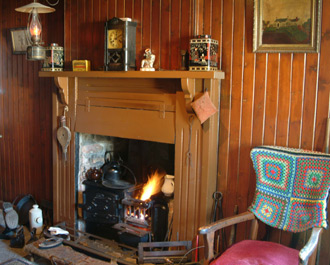At Home On The Farm
Most of the land was owned by wealthy landowners who rented out the farms
to tenant farmers.
Farms varied in size from “crafts” with as little as 2-20 acres to the larger farms where as many as 20-30 folk might be employed. These were called “fairm toons”.
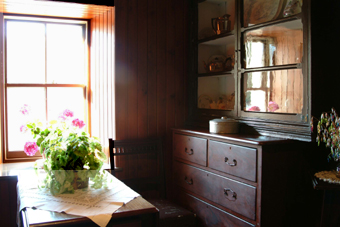
The Horseman's House at the Farming Heritage Centre at Aden Park, Mintlaw, looks just as it did a hundred years ago. It's small but very comfortable and cosy.
Houses like this were often provided for the married men but the single farm labourers accomodation was very different.
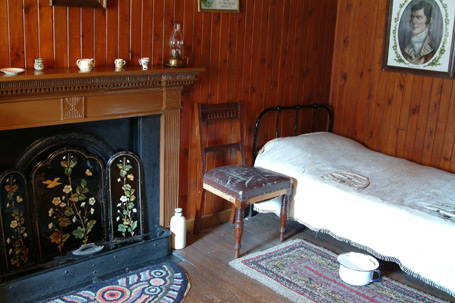
A comfortable bed and a few personal possessions. The mat next to the bed was hand made. On the wall over the bed there's a picture of Scotland's favourite son, Robbie Burns.
Robbie, "The Ploughman Poet", was born and brought up in Ayrshire, the son of William Burness (1721-1784) a tenant farmer from Dunnottar in The Mearns.
A cosy fire would have been a welcome sight at the end of a hard day's work on the farm.
What did working folk eat in those days?
There was not a great deal of choice as most of the food had to be produced
on the farm. The following list gives the main types of foods which would
have been available:
Oatmeal and milk which men received as part of their wages.
Potatoes, cabbages, turnips, kale grown in the fields or in the gardens.
Raspberries, blackcurrants, gooseberries, redcurrants and rhubarb also
grown in their gardens. These would have been made into jam or jelly.
Cheese and butter made from the milk.
Chickens or meat from the livestock.
Rabbits caught around the farm.
The menu:
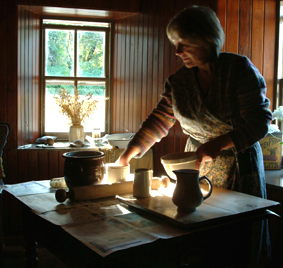
Porridge, made from oatmeal, was often eaten for breakfast and supper.
Brose, made from meal, salt, boiling water and a small piece of butter,
or cabbage, neep or kale brose made in the same way with the vegetable
replacing the oatmeal.
Saps, made from stale bread broken up and soaked in boiling water with
some milk.
Oatcakes and cheese or bread and jam for dinner or supper.
Chicken, meat or rabbit were regarded as a treat as they were not often
served.
Hairy tatties was made with hard dried fish and potatoes. The fish would
be bought from fisher women who travelled into the countryside
to exchange their fish for eggs or other farm produce.
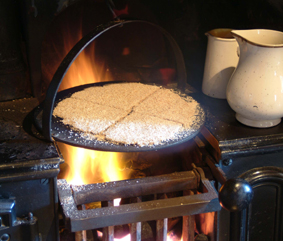
Oatcakes, girdle scones and pancakes were made by the women on the girdles which were hung over the open fires.
As you can see their diets were very different from what people eat today. Which of the meals do you think you would have enjoyed?

